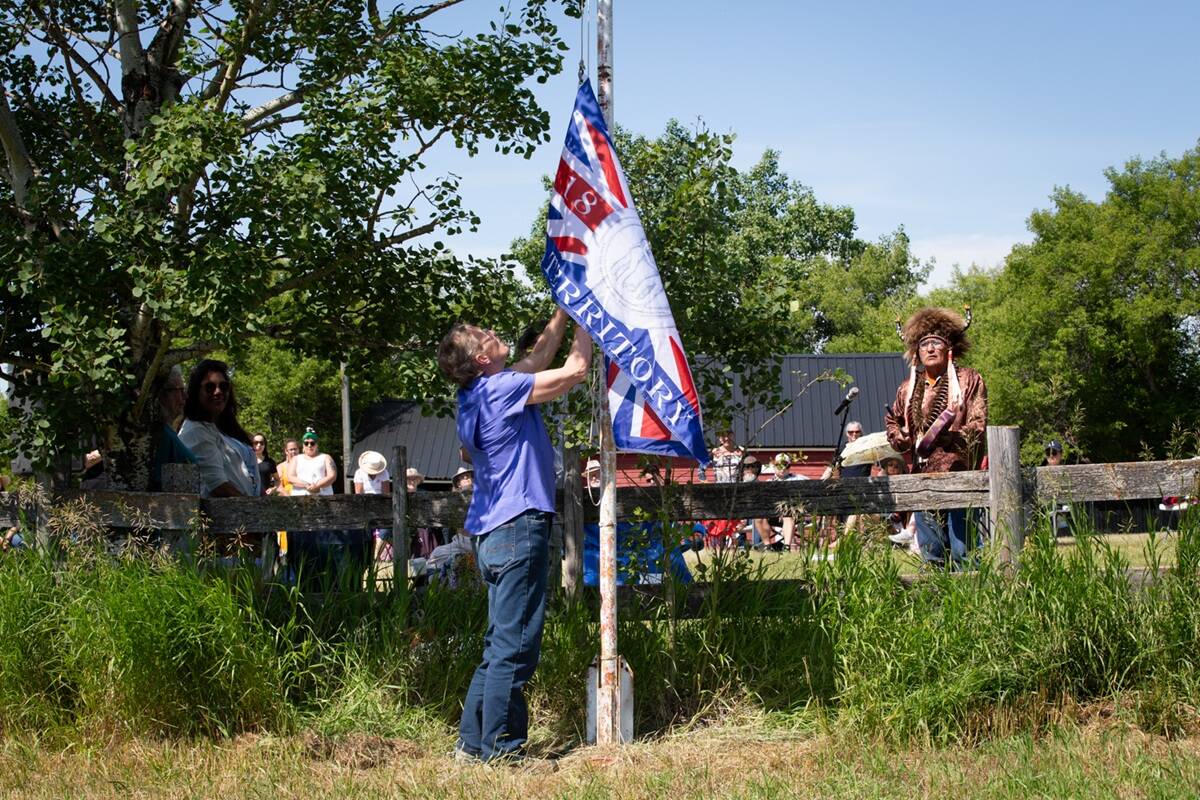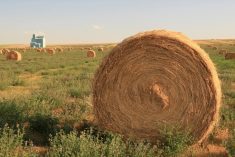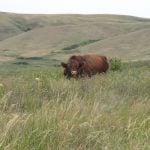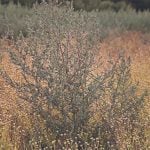Liver abscesses are a leading cause of beef defects and economic losses in the Canadian beef industry. On average, 12 to 32 per cent of cattle develop liver abscesses, which account for over $60 million in yearly losses by the Canadian beef industry due to liver discounts and condemnations.
Liver abscesses are pus-filled lesions found at slaughter. While much research has been conducted on liver abscesses over the years, the main mechanisms involved in their development are still largely unknown. Generally, liver abscesses are linked to high concentrate diets and are thought to be the result of the “acidosis-ruminitis-liver abscess complex,” meaning that increases in concentrate consumption in cattle can drive down ruminal pH levels, which can cause damage to the rumen wall. This damage to the ruminal wall then leaves it vulnerable to rumen microbe colonization, where the microbes are believed to access the bloodstream, travel down to the liver and cause infection.
Earlier studies have shown that increasing forage within the diet can decrease the amount of abscessed liver found at slaughter. Increasing forage content can promote rumen motility and buffering in the rumen; however, as forage levels rise, feed efficiency drops. Another, and the most common, prevention method is including antimicrobials, such as tylosin, into the diet.

One problem with tylosin is that it hasn’t 100 per cent solved the liver abscess problem, as we still see abscessed livers and severely abscessed livers at slaughter. In addition, concerns about antimicrobial resistance are increasing, and pressure to decrease antimicrobial use in livestock production likely won’t subside anytime soon. Taking both factors into consideration, alternative strategies for controlling liver abscesses are needed, which is where our study comes into play.
Read Also

Treaty Land Sharing Network expands reach in Saskatchewan and Alberta
The Treaty Land Sharing Network, which connects land holders with First Nations and Metis people, has expanded since it began in 2018
The study’s purpose was to evaluate different strategies for including forage throughout the finishing period and determine the effects on animal performance, liver abscesses, ruminal fermentation and microbial populations, and economics when compared to a “typical” feedlot ration.
This study took place at the Livestock and Forage Centre of Excellence (LFCE) at the University of Saskatchewan, where 360 steers were randomly allocated to one of 24 pens (15 animals per pen); these pens were then randomly assigned to one of four treatments. All treatments had monensin fed at a rate of 44 ppm. The concentrate used consisted of a 50:50 wheat:barley blend (wheat was added to help induce liver abscesses). Barley silage was used as the forage source, and ractopamine was fed in the last 42 days at a rate of 30 ppm.
The finishing period comprised 168 days on feed, broken into four feeding periods of 42 days each. The four treatments tested were: positive control (+CON), negative control (-CON), decreasing forage strategy (DECR), and an increasing forage strategy (INCR). The two control diets were considered a “typical” feedlot ration, where the diet’s forage percentage stayed consistent at 7.5 per cent (dry matter basis) throughout the entire finishing period. The only difference between the -CON and +CON was that the +CON contained tylosin, while the -CON did not. In the DECR treatment, cattle were fed more forage in the finishing period’s early stages, with forage proportions decreasing thereafter. It was then thought that if the DECR ration didn’t work, then maybe the opposite would be true, and the INCR ration was created. The INCR treatment was the opposite of the DECR treatment, where lower forage levels were fed early in the finishing period, with forage increasing later.
The average amount of forage fed for all treatments throughout the entire finishing period was 7.5 per cent of the diet (this does not consider differences in intake by the animals in each period). By having the same average forage levels fed across all treatments, we wanted to avoid losses in feed efficiency by the treatments tested.

So far, results have shown no difference in feed efficiency and dry matter intake between all treatments, which was expected. The DECR treatment showed no difference in animal performance compared to the control treatments. At the same time, steers fed the INCR treatment had a significantly lower average daily gain, resulting in a tendency to have smaller final body weights and carcass weights.
Regarding carcass characteristics, there was no difference in carcass quality, dressing percentage or marbling scores across all treatments. Cattle fed the DECR, +CON and -CON had similar carcass characteristics, while the INCR treatment showed lower yield grades. When looking at liver abscesses, there was no difference in the number of severely abscessed liver across all treatments. However, cattle fed DECR and +CON showed fewer total liver abscesses and significantly fewer minor (A-) liver abscesses when compared to the INCR and -CON.
The economic, rumen microbe and fermentation parameter results are still being processed.
Overall, this study suggests that cattle fed more forage early in the finishing phase with levels decreasing thereafter (DECR) showed similar effects on performance and liver abscess control as cattle continuously fed tylosin (+CON). Results show promise in controlling liver abscesses by adjusting forage levels in the finishing phase without reducing feed efficiency, allowing producers to reduce their usage/dependence on antimicrobials. However, it is important to take this research to a large-scale feedlot to validate the results.
We want to thank Alberta Beef Producers for sponsoring this study, the LFCE and the University of Saskatchewan for providing the structure and resources needed and Agriculture and Agri-Food Canada for collaborating on this project.
Tyen Paterson is a master of science candidate at the University of Saskatchewan. Dr. Gabriel Ribeiro is an assistant professor at the University of Saskatchewan and Saskatchewan Beef Industry Chair.

















